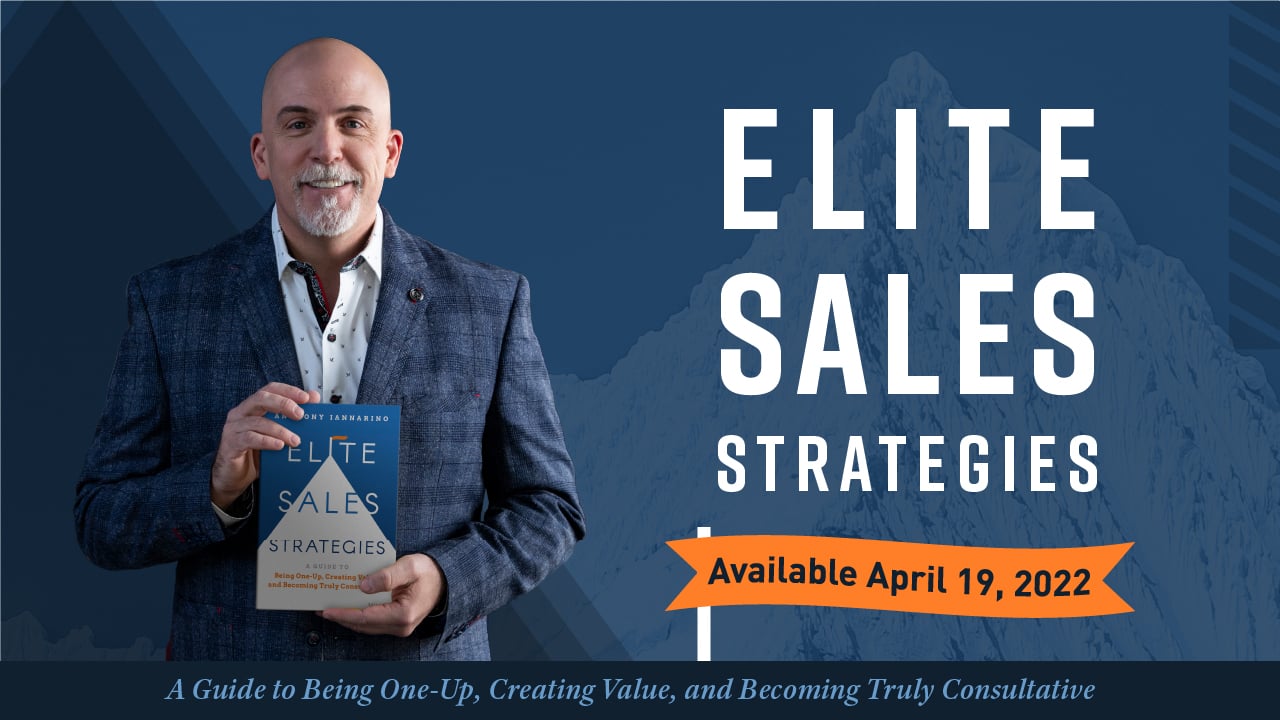There is a general consensus that you win or lose a deal in the discovery phase of the sales conversation, even if it takes a while for the client to let you know. It's impossible to overstate the importance of discovery, as it allows you to assess your client's situation and provide a diagnosis.
Most salespeople provide a poor diagnosis, limiting their assessment to the client's problem. They’ve been taught to elicit this as a way to introduce their product or service, which they have been trained to describe as a solution. When a client has a problem, what else could they need besides a solution? Let us agree to call this a shallow diagnosis as a way to distinguish it from a deep diagnosis.
Much of the time, salespeople don't work to discover what their prospective client is doing to contribute to their poor results. The One-Down salesperson is conflict averse and fears telling the client what to do to change. Even if they were capable of identifying the client's role, they wouldn't dare address it. The One-Up salesperson looks for the root cause of their prospective client's poor results and is going to work to identify what—beyond new suppliers, products, and services—the client needs to change.
Here, we’ll focus on the poor diagnosis that comes from failing to identify the changes the client is going to have to make to improve their results.
We Have Met the Enemy and They Are Ours
It is natural to look elsewhere to identify the root cause of poor performance. When results aren’t what they should be, it's easier to believe that the reason is something or someone else. A type of entropy occurs in business: It acts on something that works and makes it degrade over time. A process, strategy, or technique that once worked, eventually fails to produce once-reliable results. Much of this entropy is caused by the external environment, which is changing at a pace that is difficult to keep up with. Most salespeople who only make a shallow diagnosis ask the client to describe their problem, but they don’t look any further.
A deep discovery allows the salesperson to identify the changes the client will need to make in order to improve their results. This level of analysis is difficult but important. Addressing what the client does to contribute to their poor results means asking questions that elicit the client's role. These questions cause a One-Down salesperson to avoid the topic entirely. The One-Up salesperson knows how to identify the client's complicity in the poor results, but also how to get the client to change.
A mature leader will automatically recognize that they are responsible for the results they are failing to deliver, while an immature leader will be unhappy to be accused of being a contributing factor in their challenges. That said, improving results often means changing what the leader is doing—or not doing.
Your Baby Is Ugly
Even the most diplomatic salesperson doesn't enjoy telling the client their baby is ugly, especially if it’s likely this is the first time anyone has ever shared this truth. The problem that prevents the deeper diagnosis is the salesperson's unwillingness to identify and address the issue. Let me provide you with two examples that will bring this into sharp focus:
- The sales leader's team isn't producing the results they need. When asked about training, this leader suggests that "sales training doesn't work." The follow-up question from the One-Up salesperson will sound like, "What did you do to ensure your sales managers were able to coach and hold your team accountable for the behavioral changes?"
- Having spent years in staffing, I found clients who made enormous contributions to their poor results. Most of the problems clients believed were caused by their staffing partner actually belonged to the client, from a too-low pay rate, unattractive shifts, poorly trained supervisors and managers, and a general neglect of the people working for them.
At some point, I realized that the client would have to choose between making a change to improve their results, or continuing to fail. My experience dealing with these issues made it easy to walk away from a client that was unwilling to make the changes necessary to improve their results. The mature clients would change, even if it took time to make the internal shifts they needed. The immature and resource-constrained clients continued to suffer.
The Flawed Diagnosis
One of the reasons salespeople fail to diagnose client challenges is that they haven't been taught or trained to explore the client's actions (or lack thereof) and role in their poor outcomes. This is also the reason sales organizations win deals only to lose them. Their product or service cannot overcome any negative effect the client is having. It's also of the reason for buyer’s remorse. The salesperson promised their "solution" was going to fix the client’s "problem," an impossible task if the client’s role in it isn’t addressed.
Better discovery requires a One-Up salesperson to look at any and every factor that might be responsible for the client’s poor results. Without identifying everything the client needs to change to improve their results, the diagnosis is flawed. To be your client’s trusted advisor, you must perform a complete and effective discovery.
See: Elite Sales Strategies: A Guide to Being One-Up, Creating Value, and Becoming Truly Consultative.













Comments